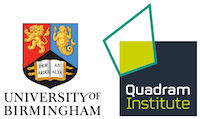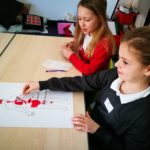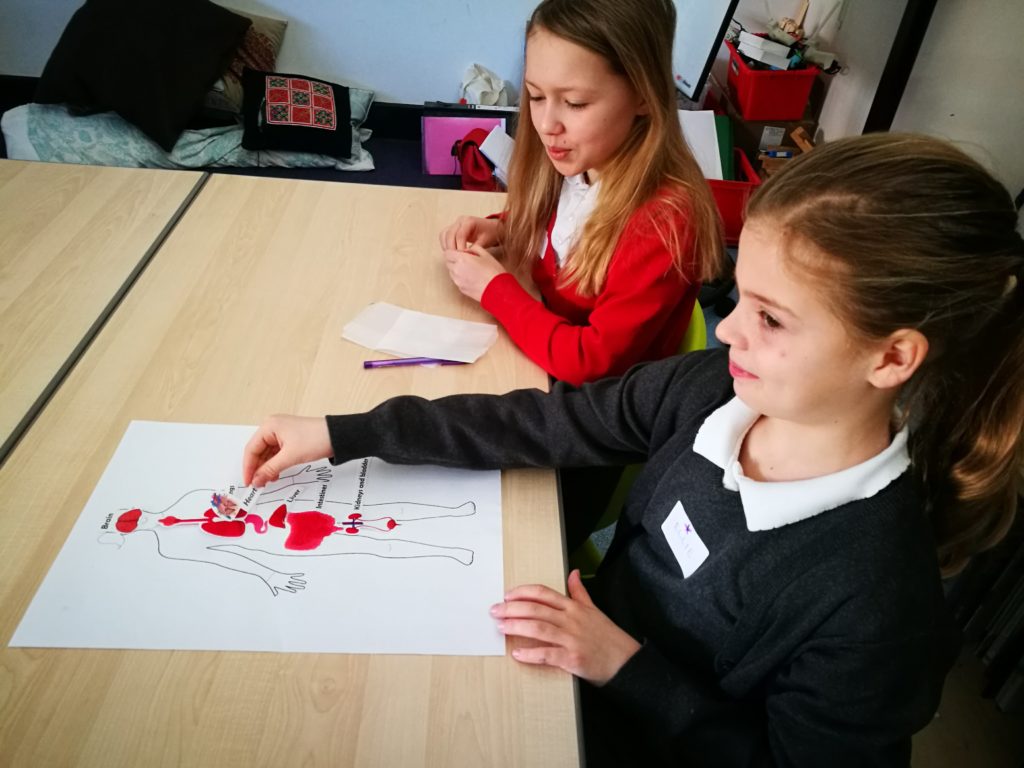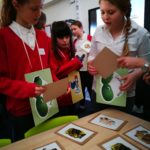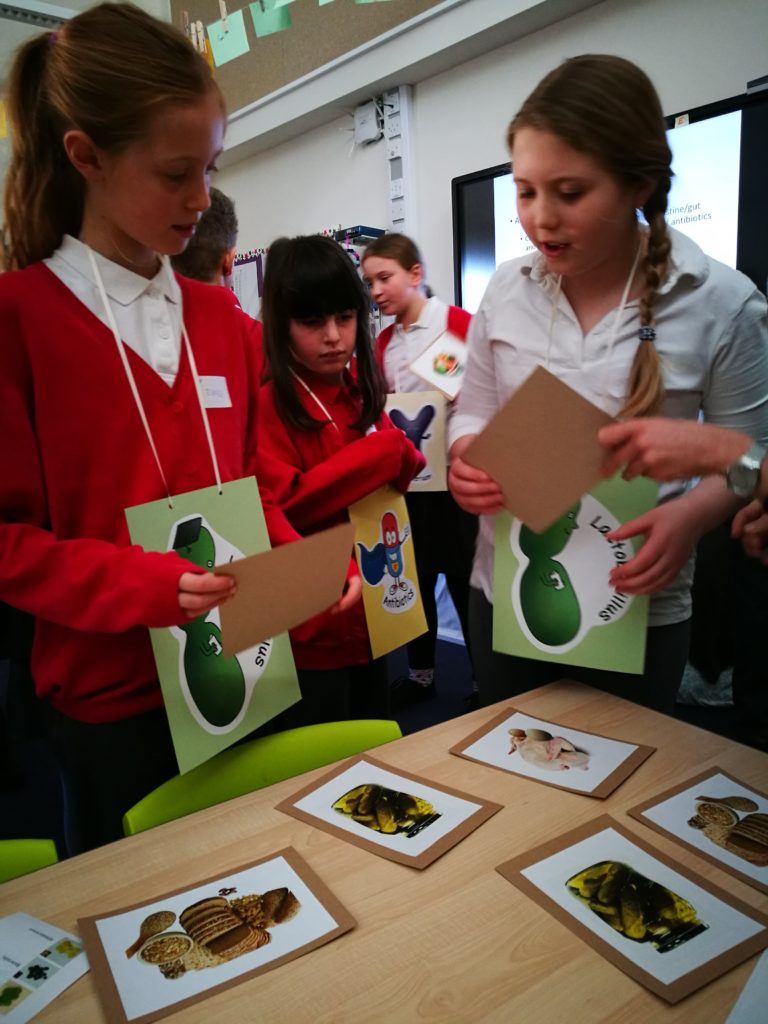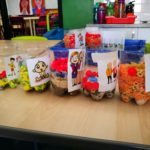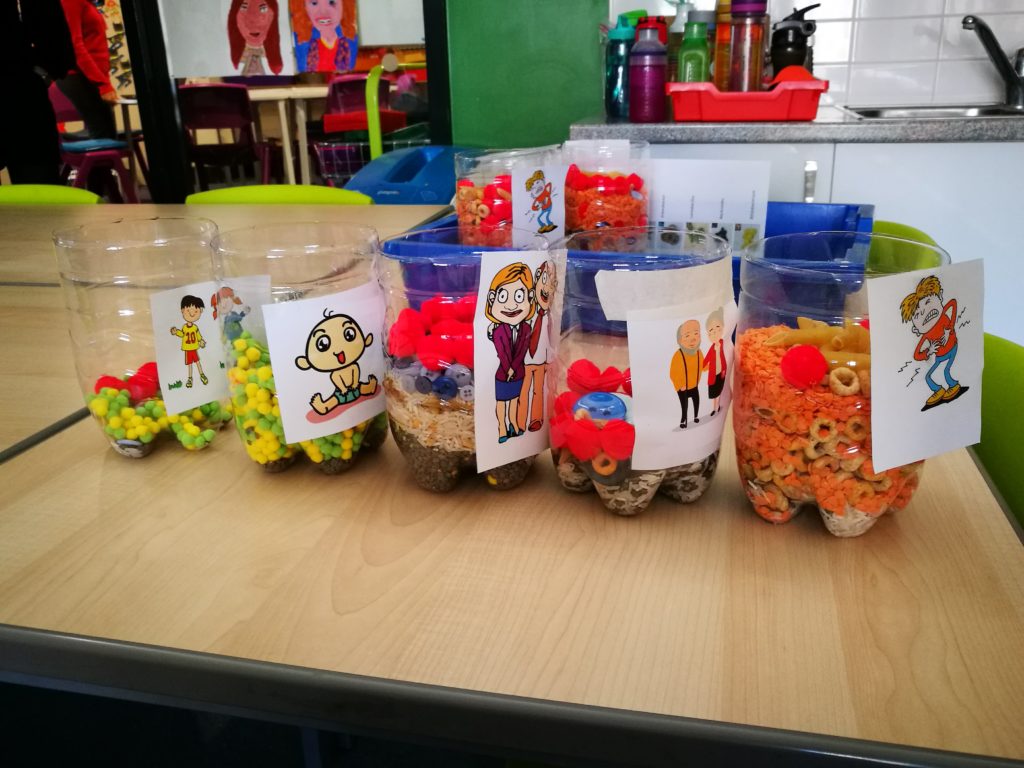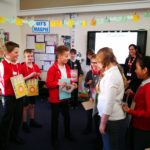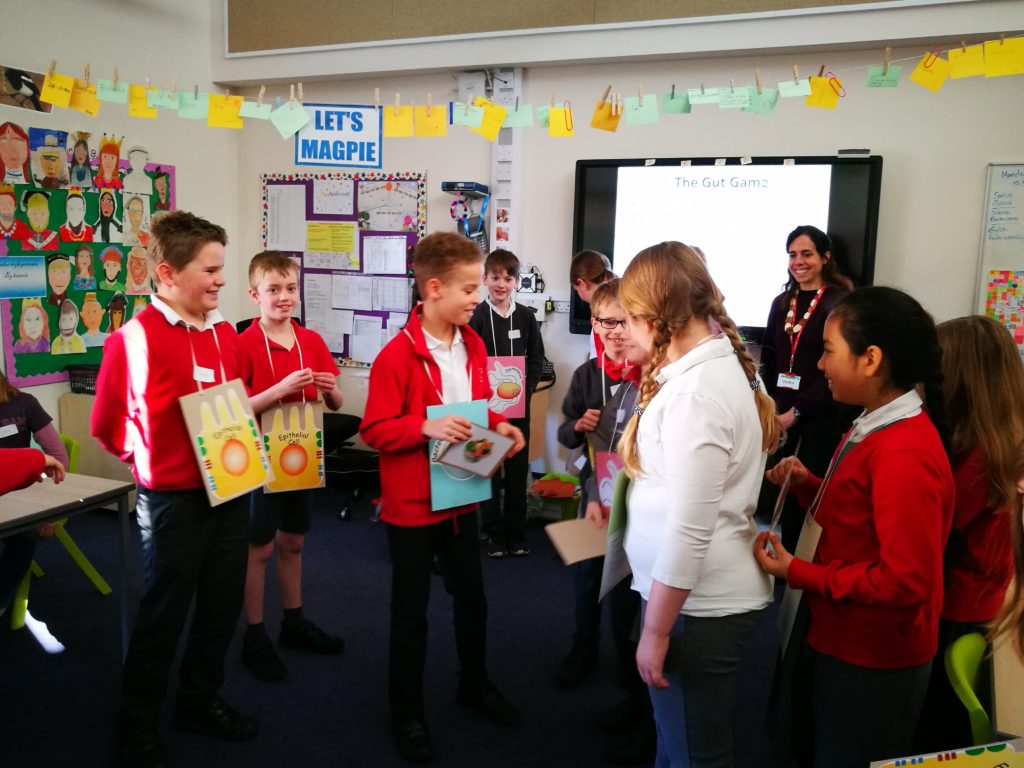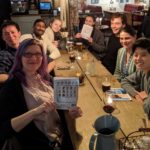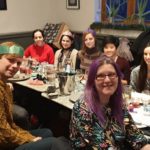Me and my microbiome goes to school!
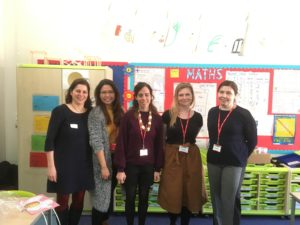
As part of the Welcome Trust Public Engagement Programme we designed a lesson plan on the gut microbiome, which was developed as a publicly available teaching resource for Schools. To test our lesson plan, four research scientists, one science communication consultant and a psychologist, were invited to the join the year 5 class at Cringleford Primary School for a fun morning of science.
We designed three activities starting with “stick the organs on the body” to assess if the students knew where all the organs in the body were located. We were very impressed with the knowledge they had although the liver and kidneys proved a bit tricky resulting with some of them being stuck on the outside of the body. This is understandable as they are deep-set organs.
The second activity was to examine the changes in the “gut microbiome throughout life”. For this the students recreated the microbiome throughout various stages of life using colourful beads, buttons, pompoms and beans. Their homemade containers clearly demonstrated, to their surprise, how different the microbiome of their grandparents, parents and younger siblings are to their own. This game was also used to introduce the concept of antibiotics and how they can deplete both good and bad bacteria in our guts.
After an introduction to the concepts of both antibiotics and probiotics, it was time for the final activity “The Gut Game”. This was a role-playing activity where pupils represented different elements of the gut environment such as the epithelial cells, different good and bad bacteria, as well as antibiotics. This interactive game engaged the students throughout, and encouraged excitement and thinking about how their gut microbiome works. We were impressed by wealth of knowledge the pupils had and the interesting questions they asked making us think about the answer.
We would like to give a big thank you to Cringleford Primary School and both teachers, Mr Kinchlea and Mr McNicholas, for supporting us in a trial run of our lesson plan and making this a great learning experience for us and, hopefully, the students.

